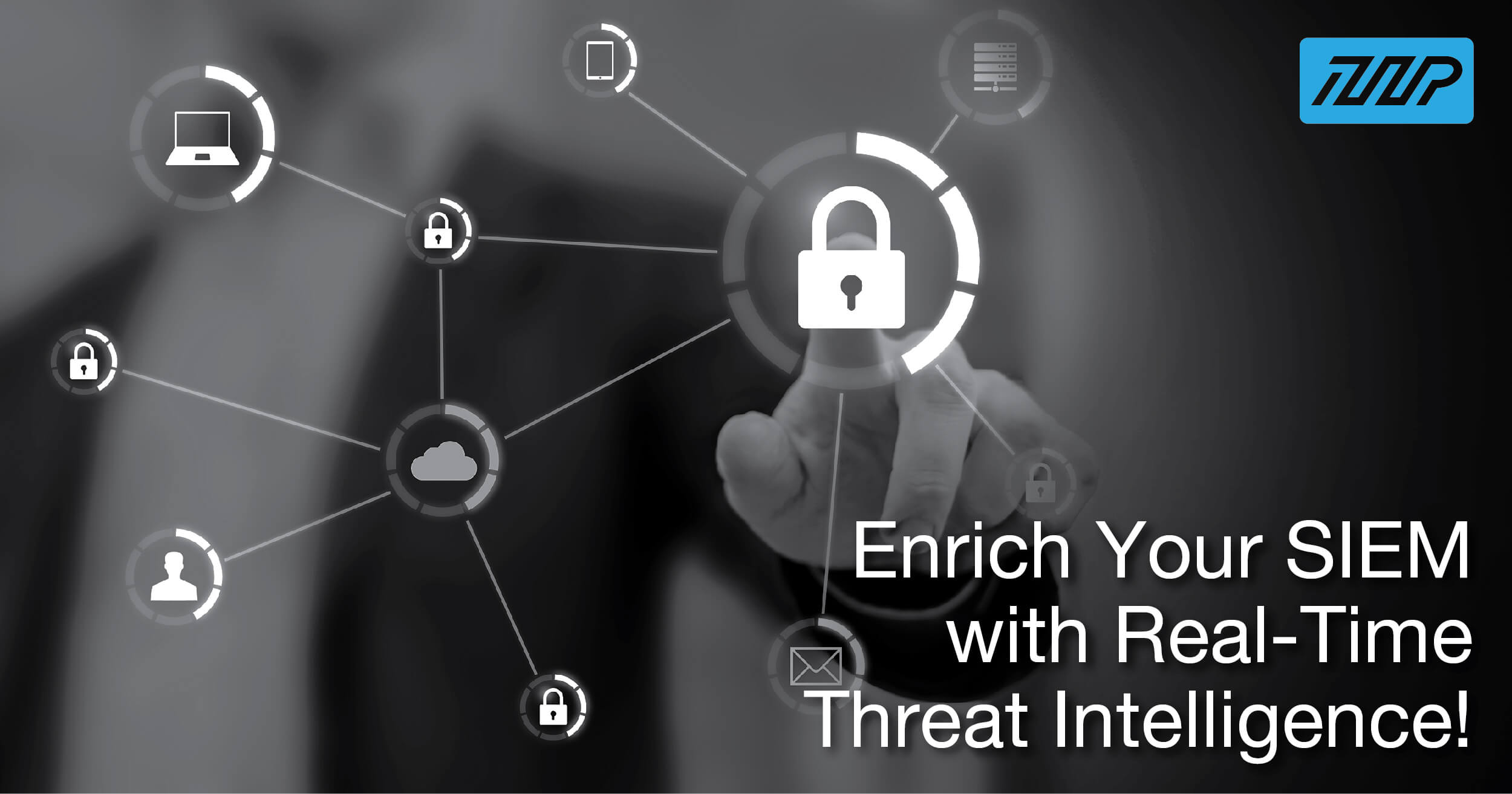Blog
The Benefits of Integrating Threat Intelligence into Your SIEM

Security Information and Event Management (SIEM) is an important tool for Security Operation Centres (SOC), which is currently employed with many organizations, most likely including yours.
The functionality includes the collection of data logs from different streams of network sources for evaluation, analysis, and other network-dependent events for threat detection and attack prevention. SIEM provides an organization with a holistic view of their cybersecurity status; hence, the data logs are collected for investigations and to access points strengthening. They are centrally integrated into a security system for centralized log management.
While SIEM looks like a great security tool, it is not always enough. Why not? Cybercriminals keep deploying creative approaches to breach security systems without being detected, by using high-definition techniques that target a security system or data storage. Hence, Threat Intelligence (TI) becomes a supportive system.
Integrating Threat Intelligence into SIEM aims to help security centers in the following ways
- Faster threat detection: The incorporation of Threat Intelligence with the internal knowledge-base of SIEM makes threat discovery faster so that quick monitoring and actions can be taken alongside. With TI, more defined targets are set for Indicators of Compromise, providing security analysts with real-time detection and follow-up with insightful corresponding actions.
- Fast tracks productivity: Threat intelligence brings about more precision to the security routines executed in an organization. With TI, organizations can improve their security protocols by automating tasks, thereby improving productivity per unit of time. The healthy pairing of SIEM with TI will help your organization to improve accuracy in threat detection. This way, you are not working in the dark and with shared knowledge, you have actionable insights to act upon and get quick results while you are able to focus your energy on more productive things.
- Enhance the functionality of your SIEM and reduce the pressure on security analysts: As helpful as SIEM is, there is a limitation to what it can do, seeing that it only works as an identifier of threats based on the data it is fed. It is not designed for multiple formats and unstructured data; rather, it works effectively with analyzed data that have been validated and corroborated. TI works as the best supplement for SIEMs. It will considerably reduce the worries and works of a security analyst by helping to structure and validate the data that an analyst would have have had to do manually.
- Helps to prioritize threats: With threat intelligence as support to SIEM, internal logs combine Intel with other sources and allow security analysts to identify relevant feeds that apply to your organization's ecosystem. With this knowledge, the security team can set priorities for alerts and applicable responses.
- Enriched Intel: Threat Intelligence expands an organization's Intel beyond the locally/ internally gathered ones. Your organization's chances of threat detection and prevention are largely increased by intelligence obtained from other sources. Your threat database would have a wealth of information from the past threats and incidents for greater counter-threat and prevention measures. This tandem (of SIEM and TI) will, consequentially, transform your security system into a proactive rather than a reactive one. It also validates the correlation rules across multiple systems.
- Fosters security automation: The union of SIEM and Threat Intelligence simplifies security protocols by fostering automation of detection and responses in the appropriate context from high-quality data feeds.
- Identify threats that matter: With uncensored and unstructured data, SIEM will trigger several alarms that will include false positives. However, with TI helping to set the context for your threats and notifications, there will be a considerable reduction in the string of false alarms to focus on the ones that matter.
- A holistic understanding of your cybersecurity status: Threat data should be evaluated on a global scale. Since continuous hacking protocols are executed en masse by hackers, the surest approach is to stay updated globally on security threats, the contexts and specific threat strings. This is why SIEMs need to be incorporated with Threat Intelligence, which would provide you with a deeper, holistic understanding of what a threat is about and the trends. You are effectively informed about the overall response and you can recognize important points of your access network where you can ward off an attacker.
Conclusively, the arsenal of a security center is not complete without a SIEM. However, there are limitations to how much SIEM can work on its own, in context and working through structured data. The effectiveness of SIEM is enhanced when they are complemented by utilizing tools such as Threat Intelligence Platform’s contextual analysis and actionable recommendations to prevent attacks. From performing assessments internally to the active monitoring of a network, TI helps SIEM to improve response time, relieve excessive workloads, enrich intelligence knowledge-base, and fast-track productivity.
For more information on how Threat Intelligence works and how to avail yourself of it, visit the Threat Intelligence Platform’s page.
Read other articlesHave questions?
We work hard to improve our services for you. As part of that, we welcome your feedback, questions and suggestions. Please let us know your thoughts and feelings, and any way in which you think we can improve our product.
For a quick response, please select the request type that best suits your needs.
Threat Intelligence Platform uses cookies to provide you with the best user experience on our website. They also help us understand how our site is being used. Find out more here. By continuing to use our site you consent to the use of cookies.